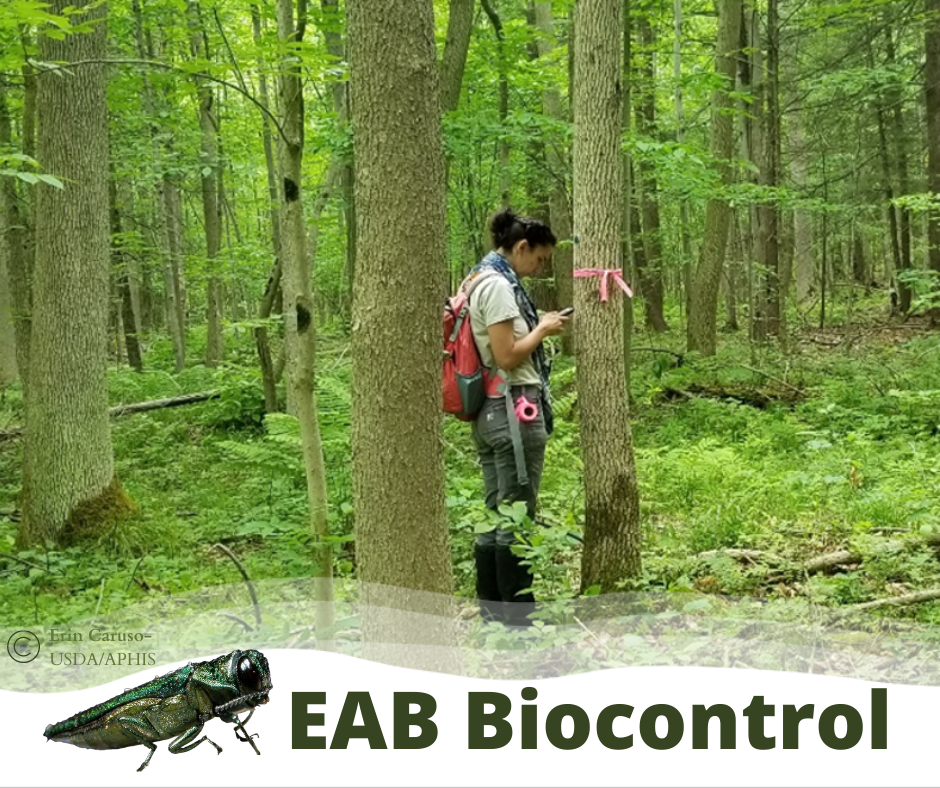Article contributed by Tom Colarusso- USDA-APHIS in the 2021 Winter Newsletter release.
The Emerald Ash Borer (EAB) is an invasive beetle destroying ash trees across the country, causing ecological and economic harm. The United States Department of Agriculture (USDA) is committed to helping manage this pest, with a focus on biological control (biocontrol). Classical biocontrol uses natural enemies from a pest’s native range to control the pest in the area it’s invading. Biological control has successfully controlled invasive plant and insect pests such as winter moth, ash whitefly, eucalyptus long-horned borer, purple loosestrife, and Klamath weed. All imported biological control agents must pass rigorous testing before they are released to ensure they will not affect our native species.
To date, the U.S. has approved four natural enemies to help manage EAB, three of which have been released in the SLELO region. Oobius agrili kills EAB eggs, while Tetrastichus planipennisi and Spathius galinae kill EAB larvae. The SLELO region is part of an exciting pilot study that is investigating combining short-term systemic insecticides and long-term biological control to help preserve ash resources in black and green ash forests. The goal is to use insecticides to keep the large, high-value ash trees alive while EAB densities decline and populations of biocontrol agents increase. We plan to then stop treating trees with insecticides because we anticipate that the biocontrol agents will take over protecting the larger trees.
We have started to test this concept in three urban city forests. As predicted, biocontrol agent populations built up and spread, EAB populations crashed, and trees treated with insecticides persisted. Insecticide treatments have been suspended for some trees, and we will continue to follow treated and untreated trees to determine if established biocontrol agents can protect those trees from EAB.
The next step for USDA was to determine if this concept could be transferred to natural forests. Our nation’s natural forests contain ash trees of high value, especially black ash forests because ash bark is used for making baskets and has economic and cultural significance. At our sites in New York, we are partnering with Tribal Nations that are exploring ways to preserve their black ash resources. We are also extending our work to state forests to test the preservation of public ash resources.


